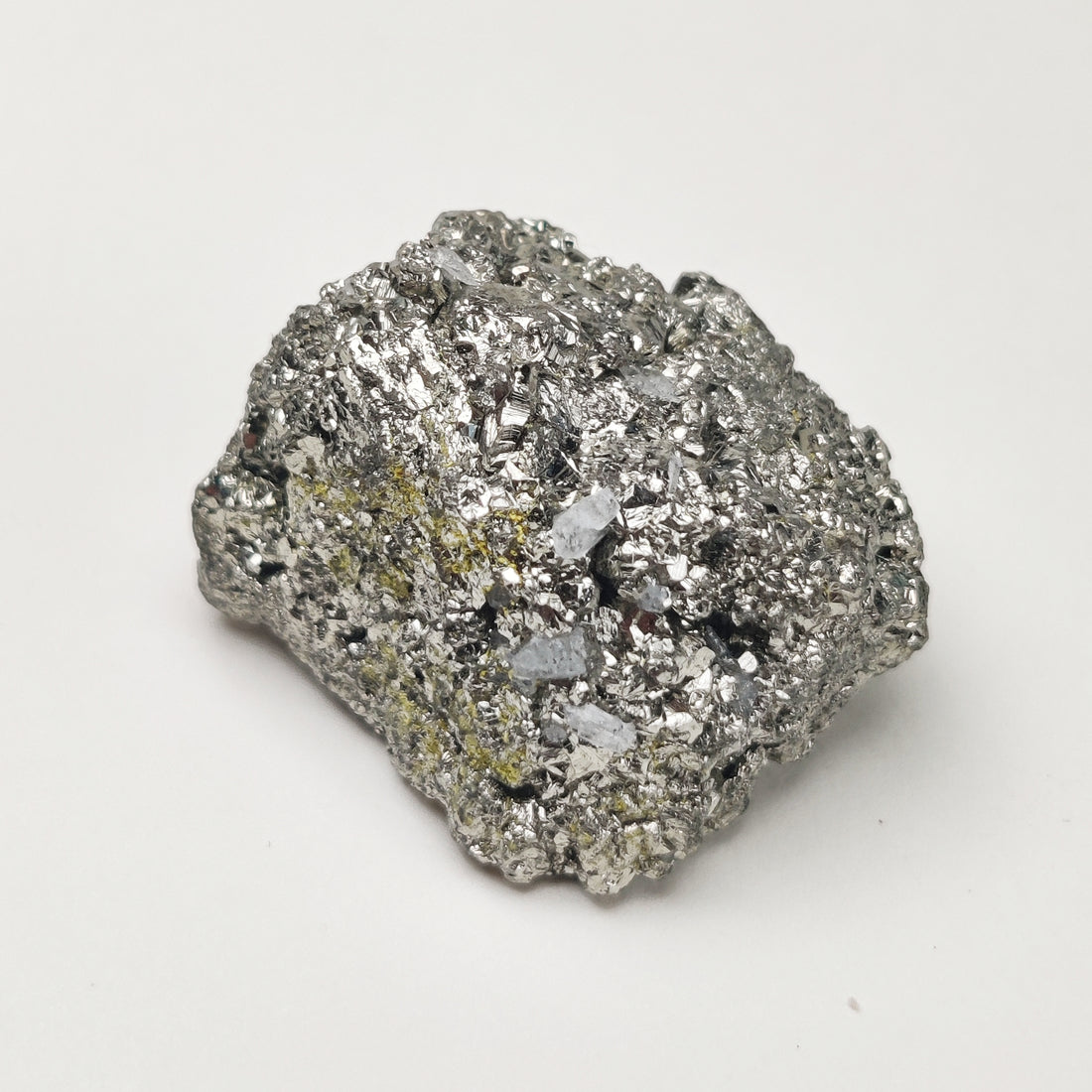Properties of Pyrite

|
|
|
|
Mineral Group |
|
|
Cleavage |
Indistinct |
|
Chemical Composition |
FeS2 |
|
Fracture |
Concodial |
|
Luster |
Metallic |
|
Diaphaneity |
Opaque |
|
Color |
Pale brass-yellow |
|
Streak |
Greenish to Brownish black |
|
Mohs Hardness |
6 - 6.5 |
|
Specific Gravity |
4.9 - 5.2 |
|
Diagnostic Properties |
Color, hardness, brittle, greenish-black streak, specific gravity |
|
Crystal System |
|
|
Uses |
Ore of gold |
|
Chakras |
Solar Plexus Chakra |
|
Zodiac |
Leo |
|
Numerical Vibration |
3 |
|
Metaphysical Uses |
Pyrite has traditionally been regarded as a powerful protection stone that defends its user from both bad energy and environmental toxins. Consequently, this stone also promotes physical health. Pyrite stimulates the second and third chakras, hence enhancing mental and willpower strength. Pyrite is also frequently believed to be fortunate, as it attracts prosperity and plenty. Note: All crystals contain energy that can be used to amplify your own intentions and manifestations through meditation and daily wear. |
| Geologic Setting: |
Pyrite occurs in a wide range of geological environments, including igneous, sedimentary, and metamorphic rock, hydrothermal mineral deposits, coal beds, and as a replacement mineral in fossils. Depending on the depositional process and environment, pyrite can be found both dispersed throughout an igneous rock and concentrated in strata. Pyrite is created when iron and sulfur are exposed to low levels of oxygen in sedimentary rocks. These are often organic settings, like coal and black shale, in which decomposing organic matter uses up oxygen and produces sulfur. Pyrite is commonly used to generate pyrite fossils or pyrite dollars, which take the form of flattened discs. For additional information, see the gemstone section on Pyrite. |


